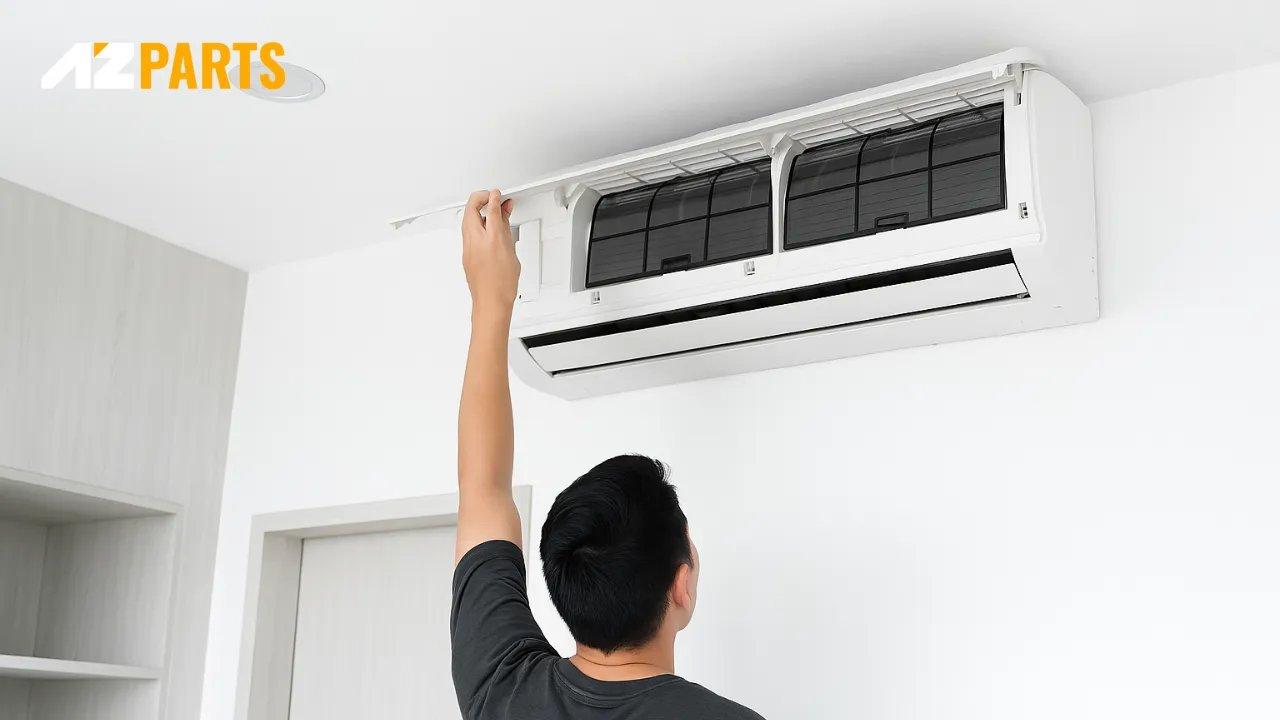Repair help
Air Conditioner Maintenance Tips for Homeowners
AZparts Team
Updated on July 9, 2025
7 min read
Proper air conditioner maintenance is crucial for ensuring optimal performance, energy efficiency, and longevity of your cooling system. Regular maintenance not only helps reduce energy costs but also prevents costly repairs and extends the lifespan of your unit. Whether you're a seasoned homeowner or new to HVAC care, understanding the essential air conditioner maintenance tips from AZParts can save you money and keep your home comfortable year-round.
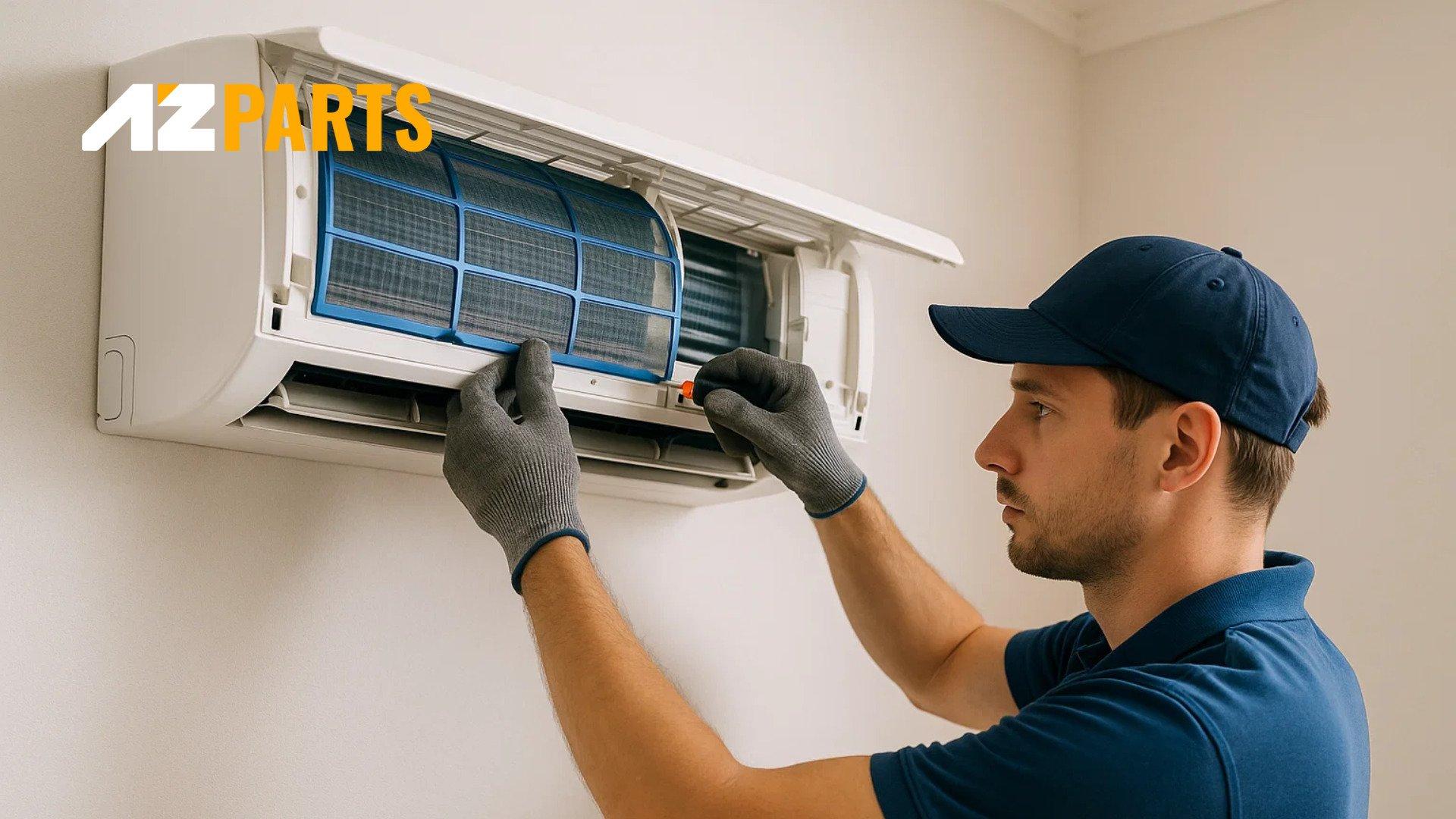
1. What Maintenance Does an Air Conditioner Need?
Regular air conditioner maintenance involves several key steps that should be performed seasonally to ensure your system operates at peak efficiency. These maintenance tasks range from simple cleaning procedures to more detailed inspections of various components. By following a systematic approach to AC maintenance, you can identify potential issues before they become major problems and keep your unit running smoothly throughout the cooling season.
1.1. Shut Off the Power
Power safety is the most critical first step in AC maintenance:
- Turn off power at both thermostat and electrical disconnect box
- Verify power is completely off using a voltage tester
- Wait 30 minutes before starting work (capacitors hold charges)
- Never skip this step - even basic cleaning requires de-energized unit
- Working on live electrical components can cause serious injury or death.
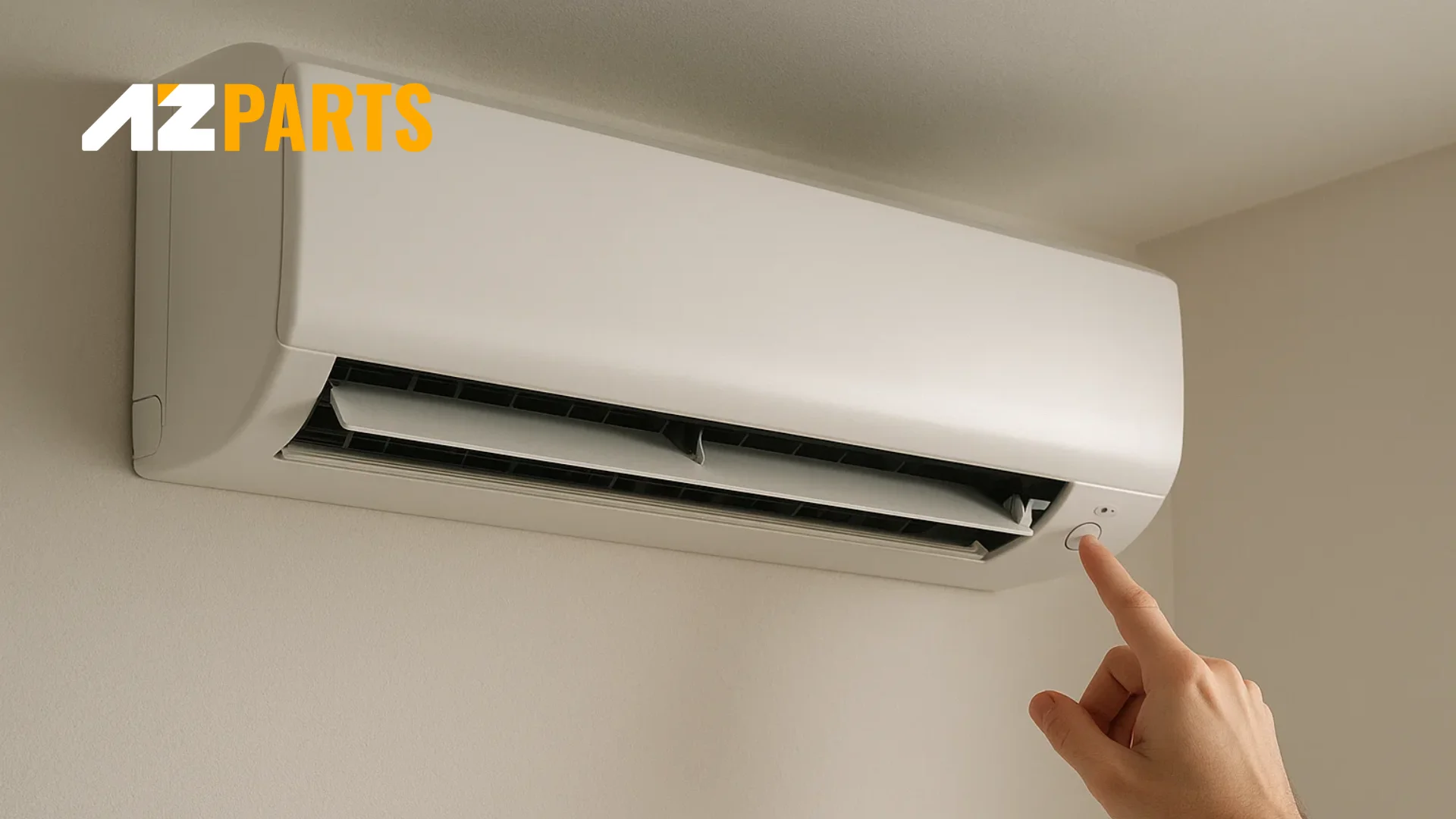
Shut Off the Power (Source: AZParts)
1.2. Remove Debris
Outdoor air conditioning units are exposed to the elements, where debris like leaves, grass, and dirt can build up and obstruct airflow, reducing efficiency. To maintain optimal performance, regularly clear debris from the unit.
Start by removing vegetation, leaves, and objects within two feet of the unit. Then, use a garden hose to gently rinse away dirt from the exterior, spraying from the inside out to prevent pushing debris further in. Focus on cleaning the condenser coils, which often collect dirt and organic matter.
For tougher buildup, use a soft brush or a vacuum with a brush attachment to clean the coil fins carefully. Avoid high-pressure water or harsh tools that might damage the delicate aluminum fins or other parts.
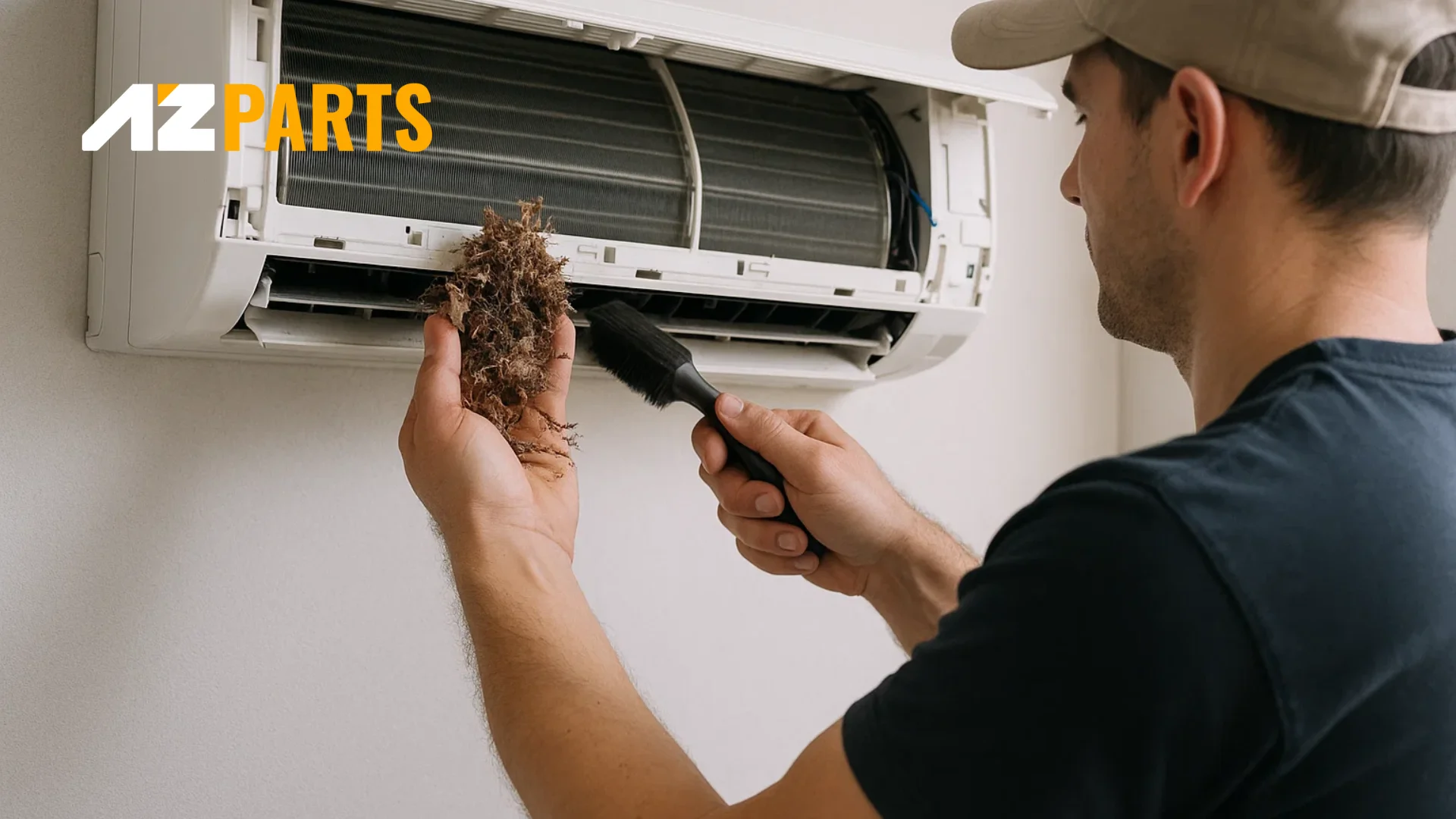
Remove Debris (Source: AZParts)
1.3. Clean and Straighten the Fins
The aluminum fins on your air conditioner's condenser and evaporator coils are essential for efficient heat transfer. Over time, these fins can become bent, dirty, or damaged, significantly reducing the unit's ability to cool effectively. Cleaning and straightening these fins is a critical maintenance task that directly impacts system performance.
Use a soft brush or fin comb specifically designed for HVAC maintenance to gently straighten any bent fins. Work carefully and methodically, as these fins are delicate and can be easily damaged. For cleaning, use a mixture of mild detergent and water, applied with a soft brush to remove accumulated dirt and grime.
When cleaning the fins, always work in the direction of the fin alignment to avoid bending them further. If you encounter severely damaged or corroded fins, they may need professional repair or replacement.
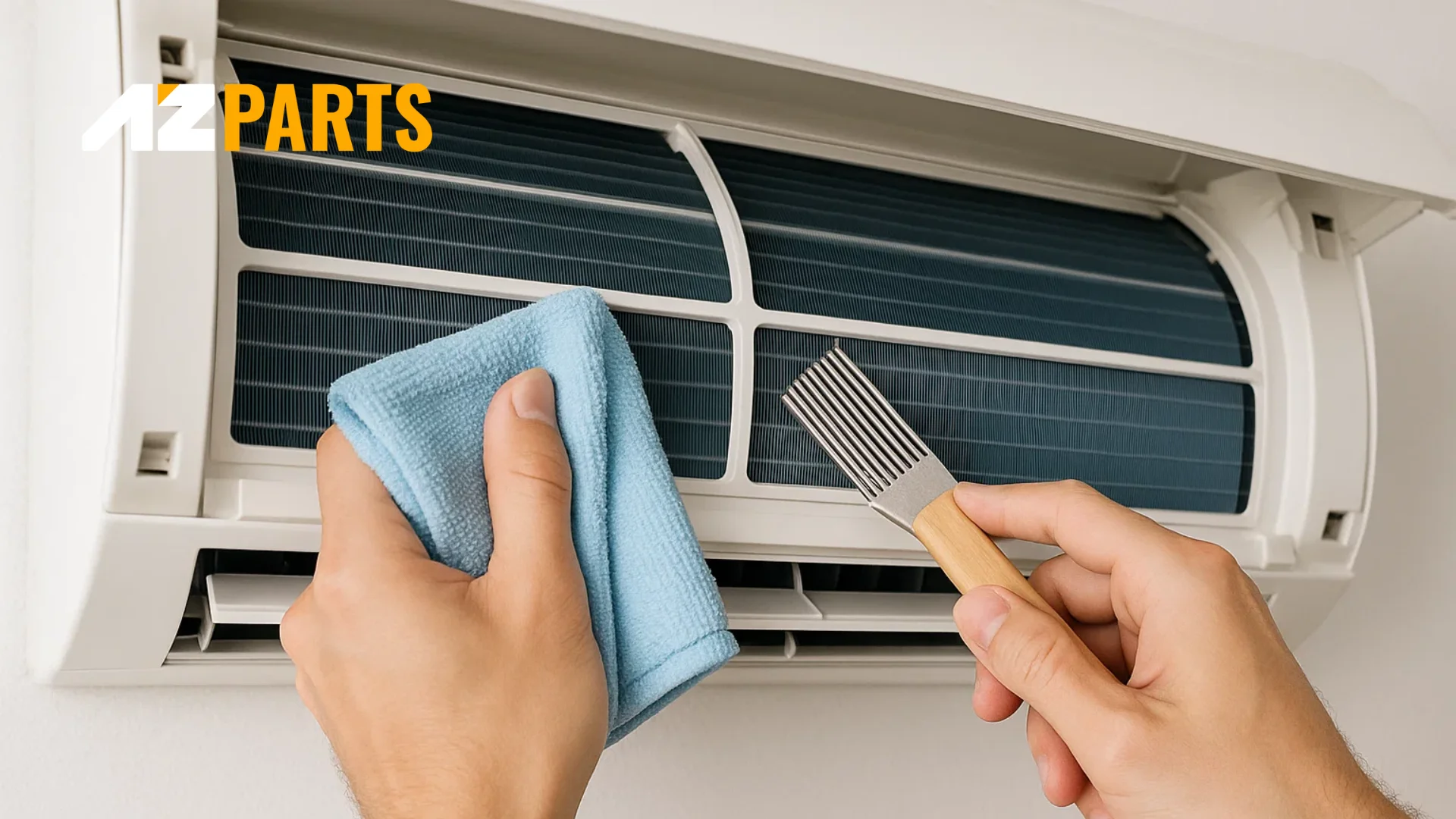
Clean and Straighten the Fins of Air Conditioner (Source: AZParts)
1.4. Level the Unit
A properly leveled air conditioning unit is essential for optimal performance and longevity. Over time, the ground beneath your outdoor unit can shift due to settling, frost heaving, or erosion, causing the unit to become unlevel. An unlevel unit can cause refrigerant flow issues, increased wear on components, and reduced efficiency.
Check the level of your unit using a standard bubble level, placing it on top of the unit in multiple directions. If the unit is not level, use shims or adjust the concrete pad to restore proper alignment. The unit should be level in all directions, with no more than a slight slope away from the house for proper drainage.
Pay attention to the manufacturer's specifications for your particular unit, as some models may require specific leveling tolerances. If significant leveling is required, consider consulting a professional to ensure proper installation and avoid potential damage to refrigerant lines or electrical connections.
1.5. Clean the Evaporator Coil
The evaporator coil, located inside the air handler or furnace, absorbs heat from your home's air. Over time, it can collect dust and debris, reducing efficiency and potentially causing frozen coils or system failures. Regular cleaning is essential for maintaining indoor air quality and overall system performance.
To access the coil, remove the air handler’s access panel. Gently brush off loose debris with a soft brush. For deeper cleaning, use a commercial evaporator coil cleaner, following the manufacturer’s instructions.
Apply the cleaner evenly, let it sit for the recommended time, then rinse thoroughly with clean water. Make sure all residue is removed to avoid coil damage or air contamination.
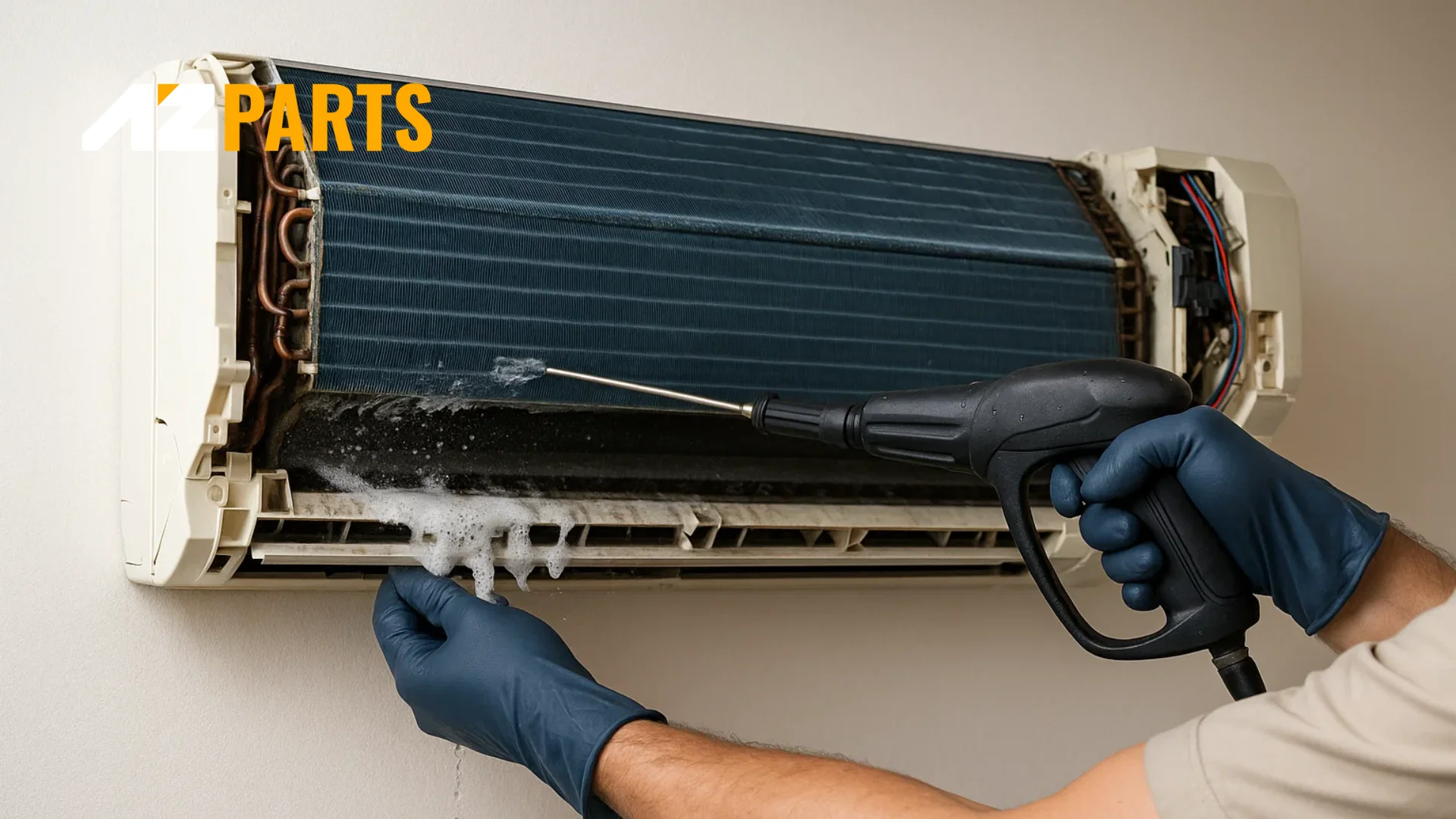
Clean the Evaporator Coil (Source: AZParts)
1.6. Clean the Condensate Drain
The condensate drain removes moisture that accumulates during the cooling process. A clogged drain can cause water damage, increased humidity, and potential mold growth. Regular drain cleaning is essential for proper system operation and indoor air quality.
Locate the condensate drain line, typically a PVC pipe extending from the indoor unit to the outside of your home. Check for clogs by pouring a small amount of water into the drain pan to see if it drains properly. If water backs up, the drain is likely clogged and needs cleaning.
Use a wet/dry vacuum to remove clogs from the drain line, or try flushing the line with a mixture of water and vinegar to dissolve organic buildup. For persistent clogs, a drain snake or compressed air may be necessary to clear the blockage completely.
1.7. Change the Blower Filter
The blower filter is your air conditioning system's first line of defense against airborne contaminants. A dirty or clogged filter restricts airflow, reduces efficiency, and can cause the system to work harder than necessary. Regular filter changes are among the most cost-effective air conditioner maintenance tips for optimal performance.
Check your filter monthly during peak cooling season and replace it when it appears dirty or clogged. The frequency of replacement depends on factors such as pet ownership, local air quality, and system usage. Standard disposable filters should typically be replaced every 1-3 months, while high-efficiency filters may last longer.
When selecting replacement filters, choose the appropriate size and MERV rating for your system. Higher MERV ratings provide better filtration but can restrict airflow if your system is not designed to handle them. Consult your owner's manual or an HVAC professional for the recommended filter specifications for your unit.
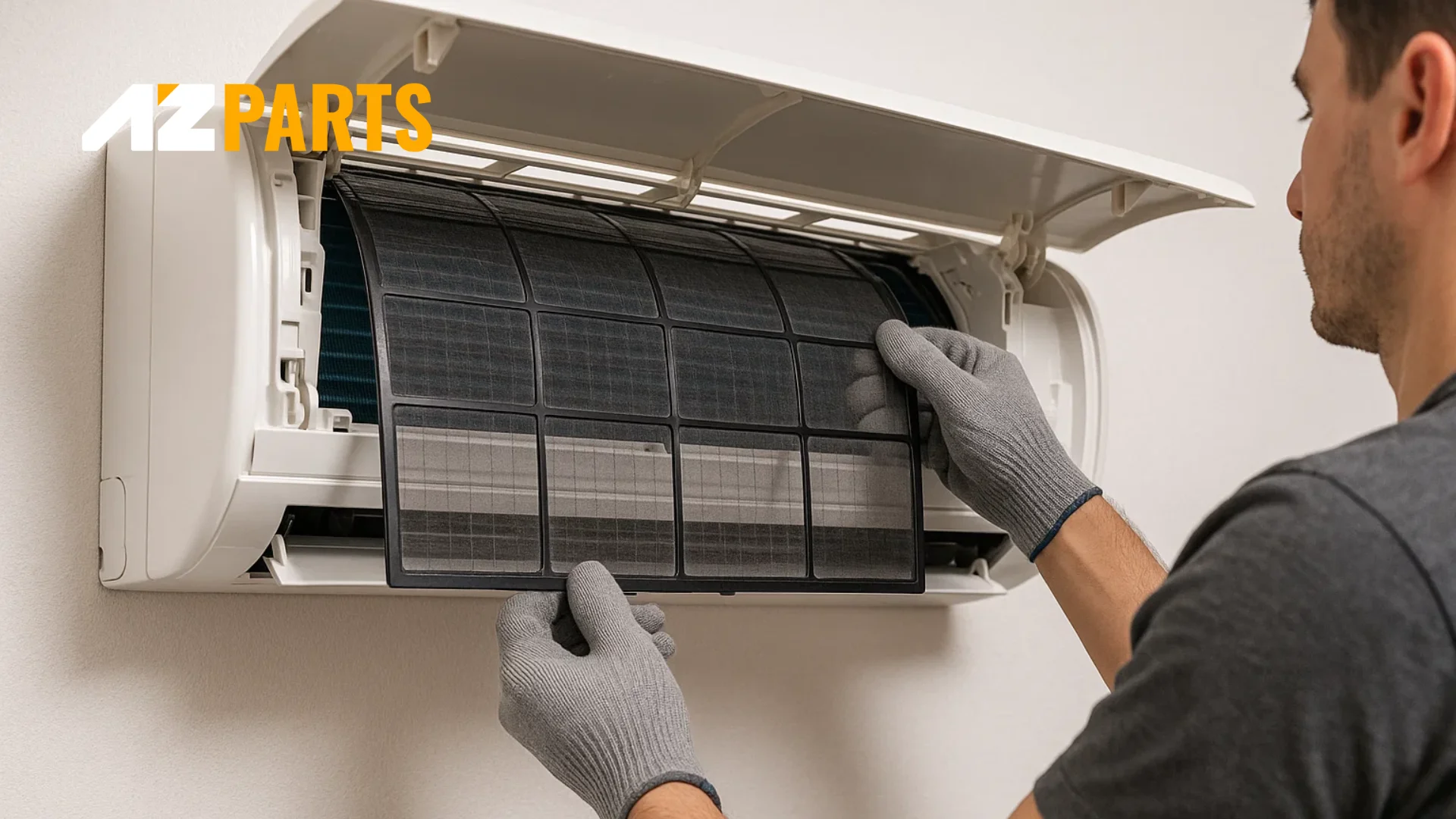
Change the Blower Filter (Source: AZParts)
2. Preparing for Winter
Proper winter preparation is crucial for protecting your air conditioning system during the off-season and ensuring it's ready for the next cooling season. Winter preparation involves several important steps that help prevent damage from freezing temperatures, moisture, and debris accumulation during the dormant period.
Start by cleaning the outdoor unit thoroughly, removing all debris and ensuring proper drainage around the unit. Trim back any vegetation that has grown too close to the unit during the cooling season, maintaining at least two feet of clearance on all sides for proper airflow and service access.
Consider installing a protective cover to shield your unit from harsh winter weather. AZParts offers high-quality air conditioner covers designed to protect your investment while allowing proper ventilation to prevent moisture buildup. These covers are specifically designed to fit various AC unit sizes and provide excellent protection against snow, ice, and debris while maintaining airflow to prevent condensation issues.
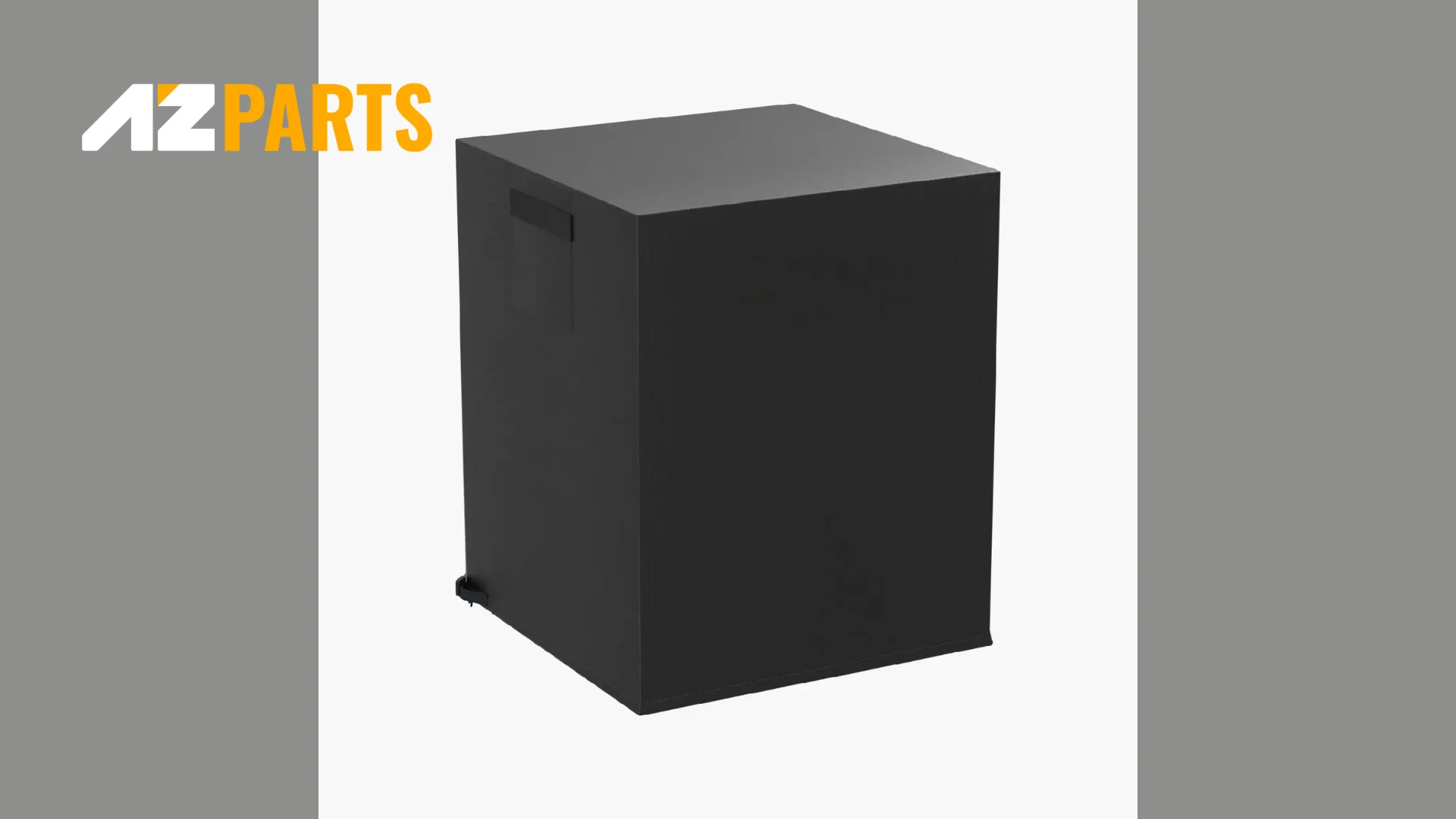
Air conditioner covers designed to protect from harsh winter weather (Source: AZParts)
Inspect and secure all electrical connections, ensuring that the electrical disconnect is properly sealed and protected from moisture. If your unit has a heat pump function, follow the manufacturer's recommendations for winter operation to prevent damage from improper use during heating mode.
Regular air conditioner maintenance is essential for optimal performance, energy efficiency, and system longevity. By following these comprehensive air conditioner maintenance tips, you can ensure your cooling system operates reliably throughout the summer months while minimizing energy costs and preventing costly repairs. From basic cleaning procedures to proper winter preparation, each maintenance task plays a crucial role in keeping your system running smoothly.
Remember that while many maintenance tasks can be performed by homeowners, complex procedures should be handled by qualified professionals. For all your air conditioning maintenance needs, including replacement air conditioner parts and protective covers, trust AZParts to provide genuine, high-quality components that keep your system running at peak performance.
Contact Information:
8 The Green, Ste A, Dover, Delaware 19901-3618, United States
support@azparts.com
support@azparts.com
Learn more about air conditioner:
Air conditioner
Further Reading
Further Reading





